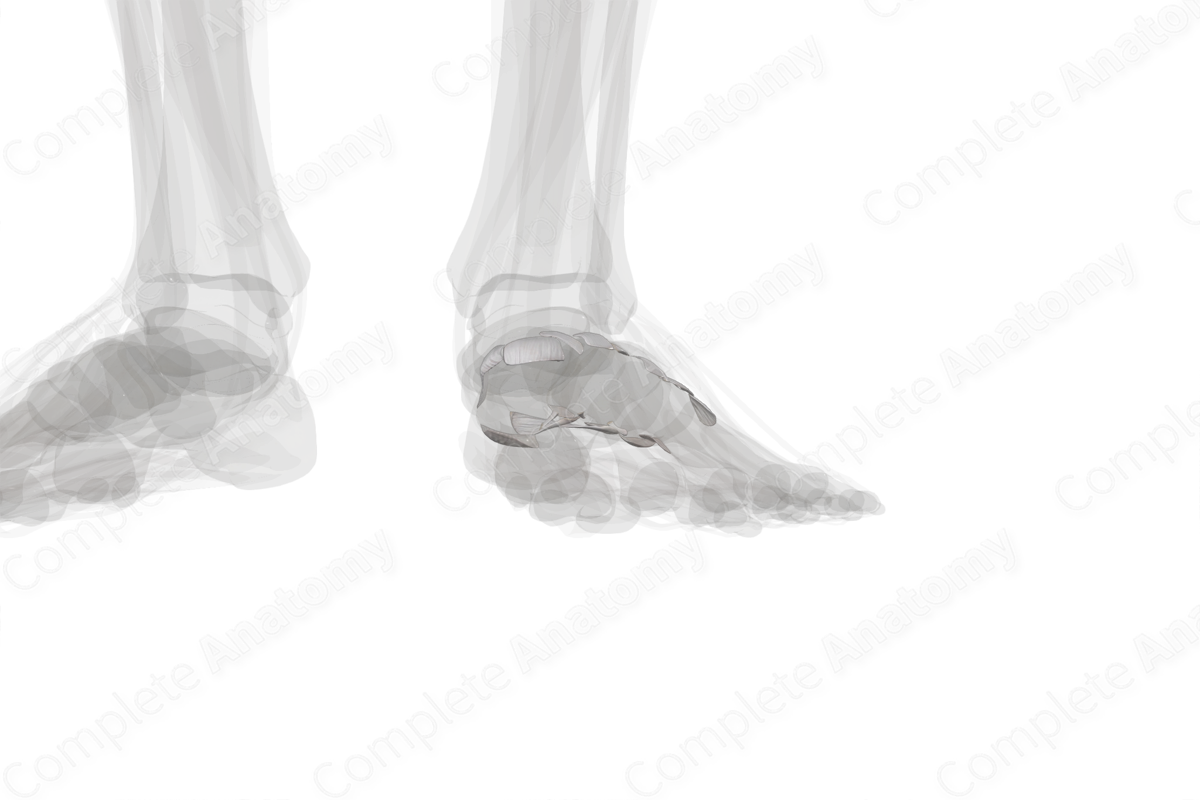
Description
The tarsometatarsal joints are the articulations formed the cuneiform and cuboid bones with the bases of the five metatarsal bones. The base of the first metatarsal bone articulates with the medial cuneiform bone. The base of the second metatarsal is held within a recess, or mortise, thus allowing it to articulate with all three cuneiform bones. This configuration means that the second metatarsal is the least mobile of the metatarsal bones. The third metatarsal articulates with the lateral cuneiform, while the fourth metatarsal articulates with the cuboid and a small portion of the lateral cuneiform bone. The base of the fifth metatarsal articulates with the cuboid bone only.
The tarsometatarsal joints are strengthened and stabilized by the plantar and dorsal tarsometatarsal ligaments and by the cuneometatarsal interosseous ligaments. The tarsometatarsal joints are involved in movements such as flexion and extension, while the first tarsometatarsal joint may also be involved in abduction and rotation.
Related parts of the anatomy
Learn more about this topic from other Elsevier products





